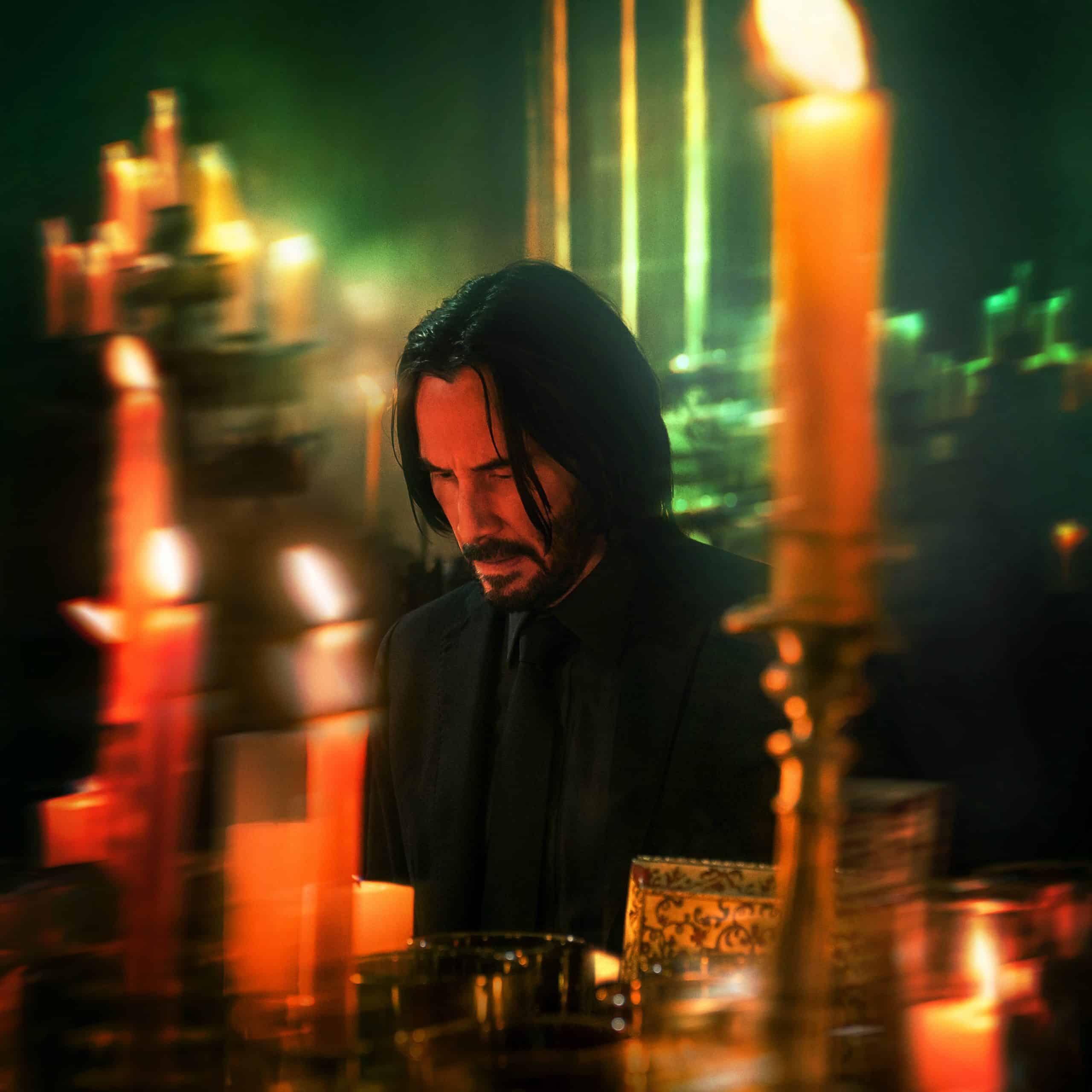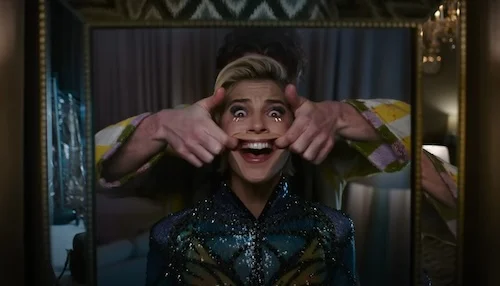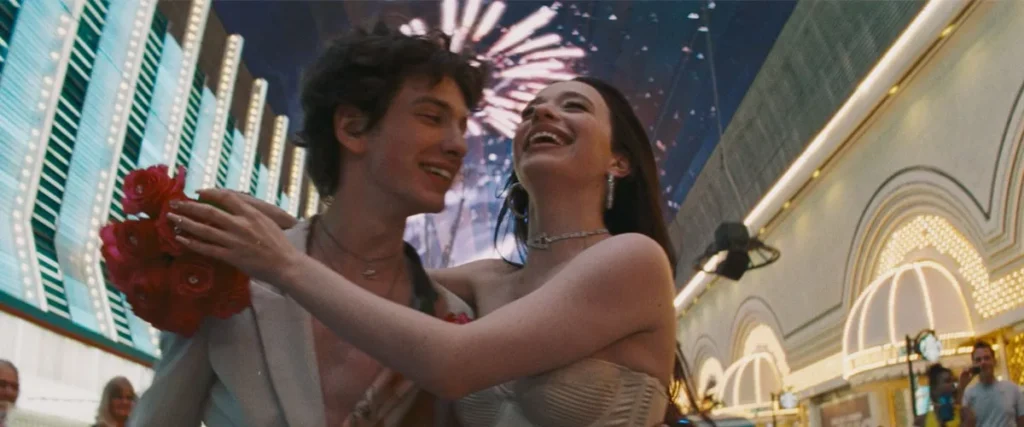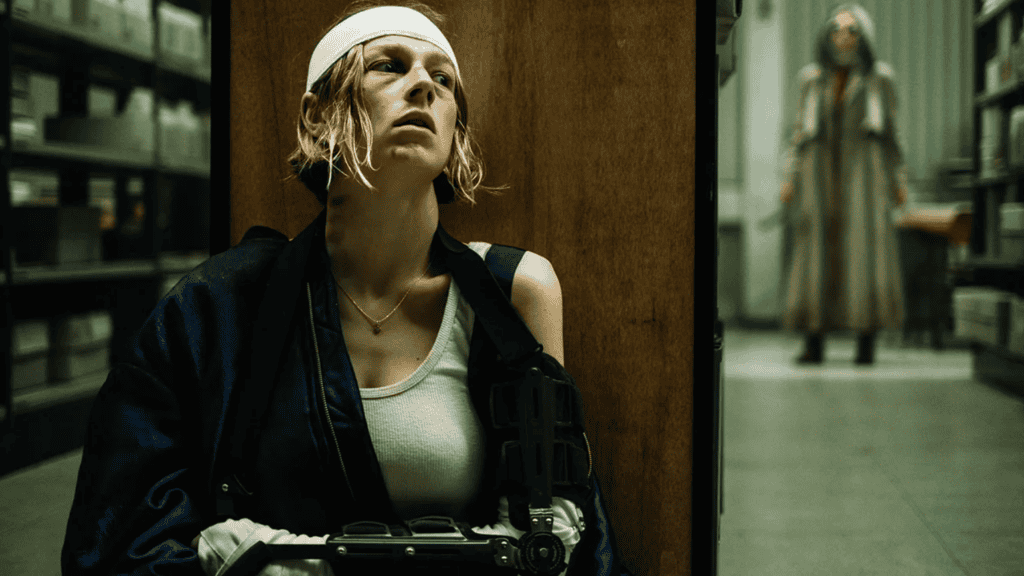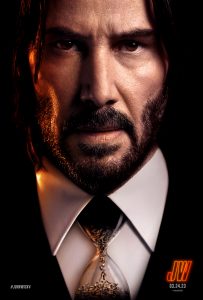
Words: Callie Petch
John Wick, released in the dead-zone dumping ground of Halloween 2014 just two months away from direct-to-DVD hell, opened with a car rolling slowly to a wall-enforced stop. John Wick (Keanu Reeves) falls out of the driver-side door, limps over to a railing, collapses, and then mournfully watches an old video of his wife on his dying mobile phone. John Wick: Chapter 4, released at the tail-end of March 2023 right as blockbuster season kicks off in earnest, opens by cutting between John punching a training board that sounds louder than most shotgun blasts and The Bowery King (Laurence Fishburne) strolling through New York City’s subway system yelling out the “abandon hope all yet who enter here” monologue from Dante’s Divine Comedy. He then lights a barrel on fire which spreads in the shape of a pentagon, declares “THE MOTHERFUCKING KING IS HERE,” and presents to John and the camera a new bespoke bulletproof suit.
‘How in the hell did we get here?!’ you may ask yourself. And it’s a fair question. When John Wick first blew everybody’s minds back in late-2014, one of the most commonly cited virtues of director Chad Stahelski’s acclaimed masterpiece was its brutal simplicity. It’s a straightforward revenge story unconcerned with extraneous worldbuilding. Which wasn’t to say that John Wick had none. In fact, the glimpses that we do see of the mysterious criminal underworld of New York City operating in shadows beneath our own – one with its own currency, exclusive hotels, ironclad rules and customs, and extensive history with John – are what give the movie both its alluring cool character and sly humorous streak. But everything outside of John’s quest to avenge his murdered puppy was merely side-dressing, all implication meant to burnish the myth of John Wick first and foremost.
Every entry in the John Wick series since that original has gone bigger. Chapter 2 jetted off to Rome and ended with the entire population of Central Park being hardened killers ready to try their luck at icing John. Chapter 3 started demystifying the structure of the High Table, the secretive ruling class of the criminal underworld, and sent John to the deserts of Casablanca and back again on a goose-chase effort to clear the bounty now placed on his head. Chapter 4 starts off with a brief scene in the Jordan desert, detours for an extended stay in Japan, flees to Germany, and finally goes all-out The Warriors along the streets of Paris as John tries to take down the High Table in hopes that doing so will finally free him from their grasp.
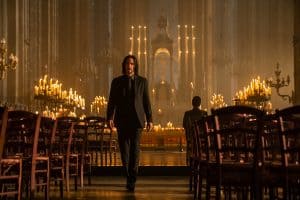
Photo Credit: Murray Close
Accordingly, the bombast and silliness has increased too. It’s easy to forget now, but the biggest action setpiece in the original John Wick was the Red Circle club shootout in which John kills a good 28 mooks over the course of seven minutes, just over a third of the film’s total body count in a sequence that’s abnormally long for the movie. By contrast, Chapter 3 opens on a solid four separate extended fight scenes which, whilst resulting in less total kills than the Red Circle, adds up to at least 20 minutes of film without stopping for breath. In John Wick, the crowd of the Red Circle makes a mad dash for the exits as soon as bullets and bodies start dropping. In Chapter 2, John and Cassian surreptitiously hold a shootout in a train station which goes completely unremarked on. At one point in the original, John gets hit by a car; at one point in Chapter 3, John gets hit by three cars one after another.
I completely understand if these movies have become too much for some people. Much like the Fast & Furious franchise, this series has made the unlikeliest transition to becoming a major blockbuster cornerstone. Also much like the Fast & Furious franchise, each successive entry detaches itself further and further from any distinguishable reality into some abstract cartoon universe of serial escalation that forever threatens to snap completely. Also also much like the Fast & Furious franchise, every new entry in this universe drills deeper and deeper on its central theme – the power of family for Fast; the inescapable maw of capitalism for Wick, it’s no coincidence that all of sequels’ big bads are middle-managers and arrogant insecure rich boys trying to uphold an exploitative system for the benefit of the few – in a way that is both in-on-the=joke but still completely earnest.
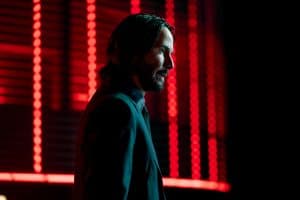
Photo Credit: Murray Close
Chapter 4, then, sees Stahelski and Reeves aiming for the most in every respect. It’s the longest entry in the series so far, clocking in seconds shy of 2 hours and 50 minutes (with a post-credits scene too). Its first big action sequence, as the Osaka Continental run by John’s old friend Koji (Hiroyuki Sanada) and concierge Akira (Rina Sawayama) comes under siege from High Table goons ordered by Marquis Vincent de Gramont (Bill Skarsgård) to destroy anyone affiliated with John, I am fairly certain runs longer than all of the original film’s action scenes puts together. The collective population of a small island nation’s worth of stuntmen are on hand to get shot, stabbed, pummelled by nun chucks, set on fire, have their arms broken, thrown out of windows, hit by cars, and tumble down the 222 steps leading to the Sacré-Cœur. Damn-near everybody featured in Chapter 4 goes through a Looney Tunes amount of punishment and it’s a coin-flip as to whether or not they’ll get back up from it for a second or third round.
Make no mistake, you buy a ticket for Chapter 4, you are getting your monies worth. Stahelski, Reeves, new writers Shay Hatten and Michael Finch, plus their stunt co-ordinators are unapologetic action historians and approach every single sequence like one of those YouTube stunt teams if they were given a blank cheque to realise their wildest dreams. ‘How does one work motion-sensing doorbells into an action movie?’ you or I may ask. Stahelski’s crew responds ‘obviously as a way for blind assassin Caine (Donnie Yen) to ambush a bunch of goons.’ There is a combination car-chase-shootout around the Arc de Triomphe that includes John doing multiple donuts around parked cars whilst one-handed shooting at the people hiding behind them, before transitioning into a gun-fu brawl around hordes of oncoming traffic. One goon-squad massacre has the camera elevated above the foundations of the building itself, soaring along in an unbroken top-down view explicitly-reminiscent of Hotline Miami. And there are similar homages to The Warriors, Laurel & Hardy, The Killer, A Fistful of Dollars, and at least two dozen more other action and comedy classics.
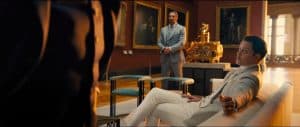
© Lionsgate Movies 2022.
Sometimes, these references and inspiration lifts come from John Wick itself. One of the most famous stunts in Chapter 2 involved John and Cassian tumbling down a very lengthy flight of stairs; no prizes for guessing why I specified how many stairs lead up to the Sacré-Cœur. At one point, John is sent to a club in Berlin with orders to assassinate the mob boss who runs the joint (Scott Adkins doing a German take on Colin Farrell’s Penguin which is as incredible as it sounds), and he’s thrown down to a lower level in almost exactly the same way as the end of the Red Circle fight from the original, only here that’s the halfway point of the setpiece. Rather than coming off as self-cannibalisation – any movie that includes a sequence where John finds every possible means of injuring somebody with nun chucks is evidently nowhere near spent on ideas – they instead function as fun callbacks for a movie which is trying to bring some semblance of closure to the last decade of both Stahelski and Reeves’ careers.
Chapter 4 can get very, very silly – there’s one gag on here which is arguably the total antithesis of this series’ prior-established deadpan comic tone – and it sends the last vestiges of a plausible criminal underworld packing well before the Paris finale. But it’s also, contrastingly, the entry most haunted by death since the original. Not just in the sudden passing of Lance Reddick, who plays faithful concierge Charon, but in the film’s focus on how trapped everybody is by the High Table. Characters who take deals hoping to secure their retirements or the safety of their loved ones only to find said deals come with so many conditions that it’s practically indentured servitude. John is repeatedly asked by Winston (Ian McShane) where he expects this crusade to end, given that aimlessly killing anyone put in front of him just results in more High Table representatives emerging from the woodwork to take their place and enact further earth-salting on what connections John has left.

Photo Credit: Murray Close
Accordingly, Hatten and Finch reframe the stakes of Chapter 4 to be less ‘will John Wick successfully kill everybody’ – because, well, duh – and more ‘will the cool characters who aren’t total bastards be able to get one over on the system which has entrapped them?’ As per usual, John Wick remains unbeaten on the character front. Partly that’s a result of casting iconic action icons and larger-than-life character actors in each of these roles so they can all just walk on-screen, looking like undeniable cool-ass motherfuckers, with enough gravitas to immediately imbue their characters with a palpable history from just scant hints of backstory. But the increased runtime allows the film to linger a little more on the interiority of these colourful assassins before and after they throw down with a horde of (sometimes literally) faceless goons or each other. John is frequently stalked by a tracker who’s monikered himself as Mr. Nobody (Shamier Anderson), accompanied at all times with a loyal dog, waiting for the bounty on John to get high enough so he can open a dog shelter upon killing, only to find that making a deal with the High Table to expedite that increase was not the wisest of choices.
The result is a kind of ‘last cowboy in town’ type of mood permeating the film even before we end on a literal gunslinger duel at dawn. Tyler Bates and Joel J. Richard’s score pairs the usual thumping electro-rock throb of the action beats with more plaintive acoustic slide guitar exchanges as the end draws ever nearer. Cinematographer Dan Laustsen, who’s been with the franchise ever since Chapter 2, continues to paint the most artful tableaus of murder with gorgeous clarity and colour-composition. But he also apes classic samurai films in the frequent shots of John alone, a single body dwarfed by institutions bigger and older than even the Baba Yaga defiantly refusing to be crushed or go out on anything but his own terms. Reeves’ infamous line deliveries get more stilted and alien here, symbolic of John’s humanity having been whittled down to almost nothing throughout the course of the series, and Yen imbues almost every single word out of Caine’s mouth with the reluctant exhaustion of a man whose hands are tied and is just completely over the shit he has to deal with.
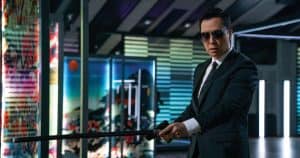
© Lionsgate Movies 2022.
Lest you get the wrong impression, John Wick hasn’t gone full-Logan. It’s not an exquisite downer. This is a movie where a guy will get slammed into two cars at full-pelt, somersault through the air, and then be capped three times in mid-air. This is a movie which treats Keanu Reeves and Donnie Yen teaming up to brutally tear through dozens of armed guards whilst a remix of Justice’s “Genesis” pounds through the speakers with the giddy ceremony that it deserves. This is a movie with Scott Adkins snarling through gold teeth in some ridiculous implacable accent that John “SHOT [ME] IN THE ASS!” First and foremost, it is a movie about cool-ass motherfuckers fucking everybody’s shit up, sometimes by launching motherfuckers at other motherfuckers via dragon’s breath shotgun blast. Yet still, despite everything, Chapter 4 believes in its characters, believes in its world, believes in its thematic parallels and the fates of those flinging their bodies around for your entertainment.
I can nitpick. Whilst the film overall does not once feel like a nearly-three hour experience, the Japan setpiece could probably have done with tightening up by cutting a wave or two of baddies. The Arc de Triomphe sequence is glorious absurdity undone a touch by the unconvincing CGI traffic since Tom Cruise wasn’t around to bully them into actually fighting in between traffic. And I can fully understand why this entry will be a bridge too far for some fans. The scale now too big, the punishment now too much to take seriously, the world now far too abstract to make sense if you’re the kind of person who is watching an action movie and asking ‘well, where are the cops?’ the length now too long, the simplicity that used to be this series’ calling card now long gone. Just like with Fast & Furious, this is what happens when you pump a straightforward midbudget premise full of steroids to blockbuster franchise level and it comes down to individual personal preference whether you can go along with the ride or not.
For me? John Wick is a classic, inarguable, but I also personally find that the more abstract and full-tilt this franchise gets, the more and more it speaks to me. The action sequences find newer, stronger ways to thrill me, tickle me, and repulse me. The characters become larger, cooler, and more memorable with each passing instalment. The series’ central capitalism metaphor gets sharper and more rewarding to dive into. The ambition becomes ever more laudable as it becomes ever more evident that Stahelski has the skills to justify the increasing scope of his vision. Chapter 4 is Stahelski swinging for the fences, leaving everything out there for what feels like a swansong blaze-of-glory. It is The Most John Wick. It may be my favourite John Wick. I loved it. Long live the king.

